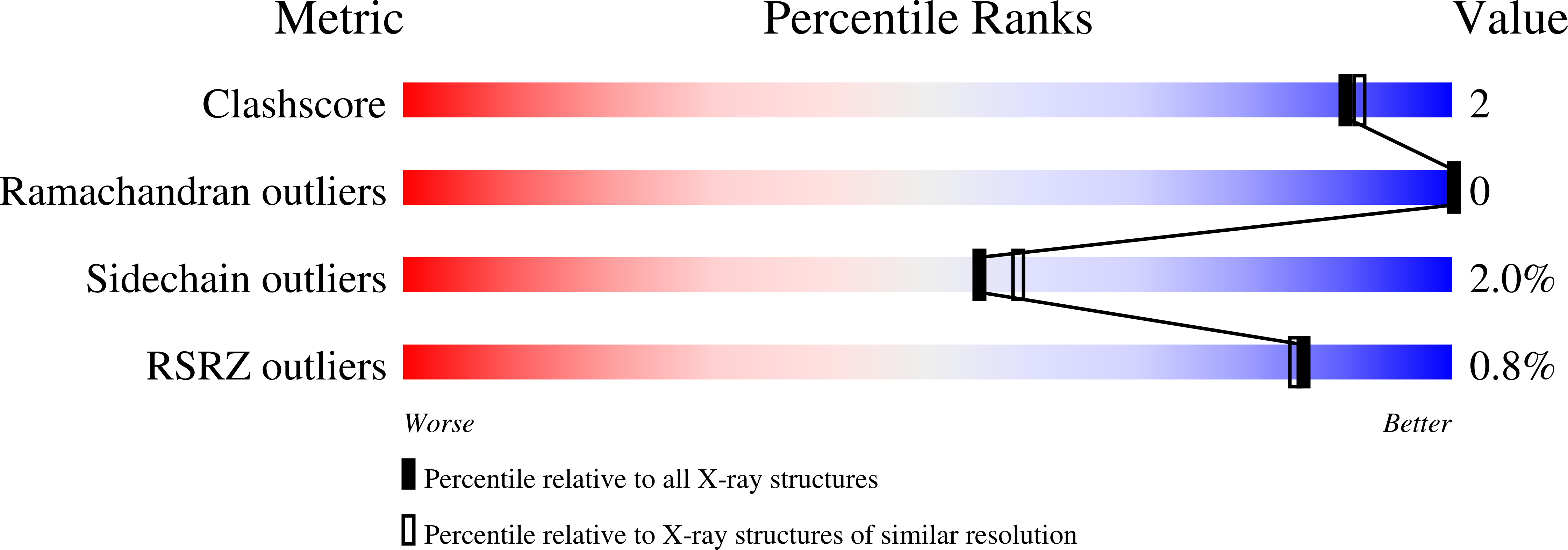The ionization of a buried glutamic acid is thermodynamically linked to the stability of Leishmania mexicana triose phosphate isomerase.
Lambeir, A.M., Backmann, J., Ruiz-Sanz, J., Filimonov, V., Nielsen, J.E., Kursula, I., Norledge, B.V., Wierenga, R.K.(2000) Eur J Biochem 267: 2516-2524
- PubMed: 10785370
- DOI: https://doi.org/10.1046/j.1432-1327.2000.01254.x
- Primary Citation of Related Structures:
1QDS - PubMed Abstract:
The amino acid sequence of Leishmania mexicana triose phosphate isomerase is unique in having at position 65 a glutamic acid instead of a glutamine. The stability properties of LmTIM and the E65Q mutant were investigated by pH and guanidinium chloride-induced unfolding. The crystal structure of E65Q was determined. Three important observations were made: (a) there are no structural rearrangements as the result of the substitution; (b) the mutant is more stable than the wild-type; and (c) the stability of the wild-type enzyme shows strong pH dependence, which can be attributed to the ionization of Glu65. Burying of the Glu65 side chain in the uncharged environment of the dimer interface results in a shift in pKa of more than 3 units. The pH-dependent decrease in overall stability is due to weakening of the monomer-monomer interactions (in the dimer). The E65Q substitution causes an increase in stability as the result of the formation of an additional hydrogen bond in each subunit (DeltaDeltaG degrees of 2 kcal.mol-1 per monomer) and the elimination of a charged group in the dimer interface (DeltaDeltaG degrees of at least 9 kcal.mol-1 per dimer). The computated shift in pKa and the stability of the dimer calculated from the charge distribution in the protein structure agree closely with the experimental results. The guanidinium chloride dependence of the unfolding constant was smaller than expected from studies involving monomeric model proteins. No intermediates could be identified in the unfolding equilibrium by combining fluorescence and CD measurements. Study of a stable monomeric triose phosphate isomerase variant confirmed that the phenomenon persists in the monomer.
Organizational Affiliation:
Laboratory for Medical Biochemistry, University of Antwerp (UIA), Wilrijk, Belgium. lambeir@uia.ua.ac.be















